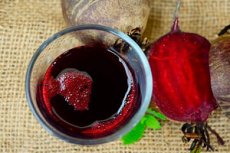Beet juice and exercise: an optimal tandem for brain activity
Last reviewed: 17.10.2021

All iLive content is medically reviewed or fact checked to ensure as much factual accuracy as possible.
We have strict sourcing guidelines and only link to reputable media sites, academic research institutions and, whenever possible, medically peer reviewed studies. Note that the numbers in parentheses ([1], [2], etc.) are clickable links to these studies.
If you feel that any of our content is inaccurate, out-of-date, or otherwise questionable, please select it and press Ctrl + Enter.

A huge amount of research has allowed to prove that physical exercises improve the quality of thinking, especially in people after 40 years.
The latest study led scientists to a new discovery: it turns out that a cup of freshly squeezed beet juice, pre-drunk before training, further optimizes brain processes.
American experts in the field of neurology conducted an experiment in which volunteers of elderly age participated. They were asked to regularly drink beet juice immediately before physical exercises. As a result, it was observed that the regular use of a healthy drink led to an increase in the connection of neurons with various brain regions: a group of volunteer juice lovers demonstrated physical and mental indices an order of magnitude higher than other peers who did not drink juice.
The study was led by Professor Jack Rejeski, representing the Department of Health and Physical Education at Wake Forest University, North Carolina.
As explained by the authors of the experiment, the activity of brain areas in elderly participants after physical training and the use of beet juice in terms of indicators is close to those of young people. Physical activity stimulates brain activity for its part, and the beets potentiate this property.
In our country, beets are popular except for borscht or vinaigrette. Rarely, who can come to mind using this root vegetable for making sports cocktails. And completely in vain: recently specialists often remind of the unique properties of a beetroot product.
For example, beets can stabilize blood pressure and increase the endurance of athletes. The beet contains a considerable amount of natural nitrate compounds, which in the body are converted to nitric oxide - a strong vasodilator that improves blood circulation not only in the limbs and organs, but also in the brain.
Physical loads, in turn, also accelerate blood flow, while simultaneously activating the processes of remembering and thinking. After training, neurons are better able to regenerate, reducing the risk of developing senile dementia.
To make sure of the results, Professor Regeski conducted an additional experiment, selecting 26 volunteers aged 55 and older, the feature of which was that they all suffered from hypertension.
The volunteers were divided into two groups and three times a week they exercised with a moderate load, lasting 50 minutes each.
The participants of the first group drank ordinary water 60 minutes prior to training, while the participants in the second group drank beet juice. None of the participants had previously engaged in sports.
The experiment lasted one and a half months, after which the volunteers were thoroughly diagnosed.
According to the results of brain tomography, those who drank juice experienced strong structural activation of the somatomotor cortex, a zone that helps control their own body.
In addition, the juice allowed to strengthen the communication of the somatomotor cortex with a number of located areas of the brain, improve the function of the insular cortex - the zone responsible for the processes of thinking, emotional state and motor control.

 [
[